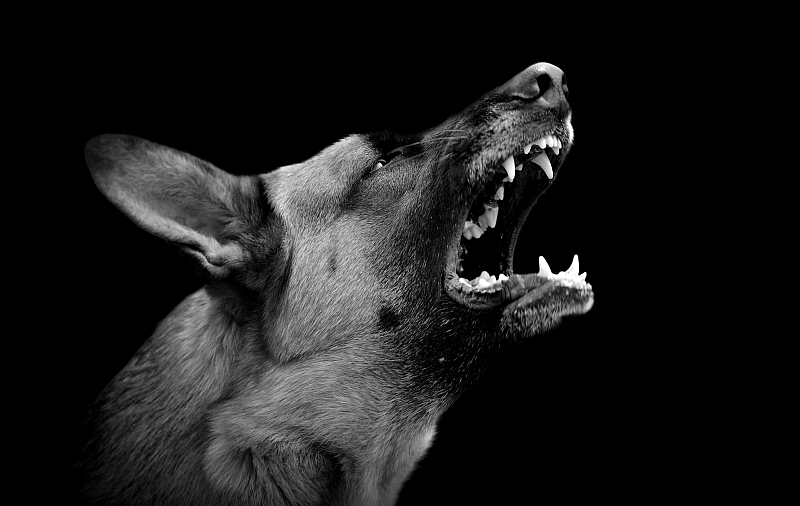Every animal, including humans, can become aggressive when they are put in certain situations, and dogs are no different. If a dog feels annoyed, upset, or scared, it can get aggressive as a means of protecting itself, its territory, or its family (e.g. her puppies or human family members). As natural as justified aggressive behavior might be, it is still something that has to be dealt with in order to ensure the safety of others. There are a variety of reasons why a dog might become aggressive, and it is important to know what triggers aggression in dogs in general, and in your dog in particular.
Aggressive Behavior
As a category of behavior, aggression is often easy to recognize, but it is worth reviewing what aggressive behavior entails so that there are no confusions about what aggressive behavior looks like.
- Barking: Any type of barking is considered aggressive behavior, but especially so if it is directed specifically at a person or thing.
- Growling: Growling at someone or another animal is a subdued form of aggression as compared to barking.
- Baring Teeth: Baring teeth is a clear sign of aggression as it is meant to show the target of the aggression the tools of attack that a dog has at its disposal.
- Muzzle Punch (pushing or striking with a closed mouth): Though a muzzle punch can be a playful way of getting attention, depending on the context it can also be aggressive behavior and is a warning to keep clear and back off.
- Snapping: Snapping at people or other animals is a clear sign of aggression even if no contact is made.
- Biting: This one goes almost without saying, but biting which causes no, little, or severe injury is the most overt type of aggression a dog can show. This, of course, excludes accidental nipping during play—this should still be addressed through training, but is not an act of aggression.
Reasons for Aggression in Dogs
Aggression does not come to be from a vacuum, it is in fact always the symptom of an underlying cause. There are three main causes of aggression: Fear & anxiety, Pain, and frustration. Each of these causes can lead to aggression.
Fear & Anxiety: Aside from normal responses to stressors, aggression can result as a mode of response to things or situations. A dog might be afraid of specific person or things or general categories (i.e. people wearing hats). Dogs may also become anxious and fearful if they are confused about their environment and what is expected of them.
Pain: Physical pain, as we as discomfort can lead to aggression especially if someone inadvertently causes pain (i.e. by touching a sore joint, or limb).
Frustration: Being frustrated (due to a variety of reasons) can also lead to aggression. Some reasons that can results in frustration is the feeling of being trapped, being forced into situations, tricks or exercises that are against the dog’s wishes, the violation of the dog’s personal space, and physical punishment.
Examples of Aggression Triggers
Aside from the broad conditions and situations discussed above, there are certain things that can trigger aggressive behavior/reaction; these include:
- Being lifted off the ground
- Grooming activities such as nail trimming, bathing, and brushing
- Veterinary visits and exams (i.e. eye and dental exams, vaccinations, ear cleaning)
- A new canine mother may show aggressive behavior as protection for her new litter.
- A dog may also show aggression if she feels that her food (other resources) are threatened (i.e. if someone reaches out to grab a chew toy form her mouth).

